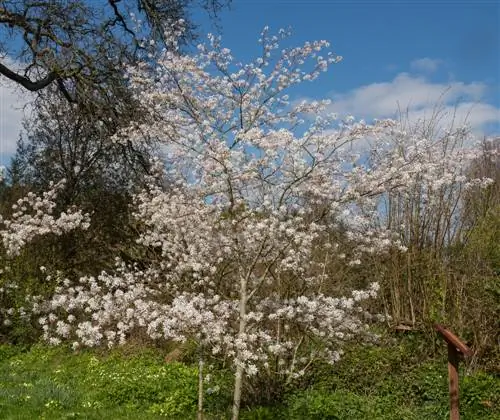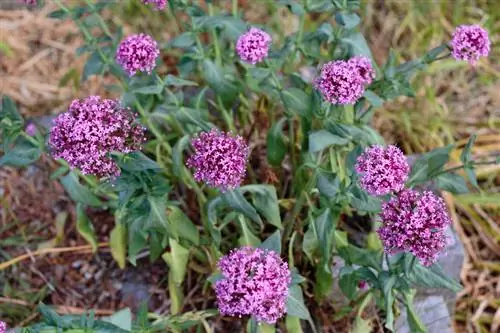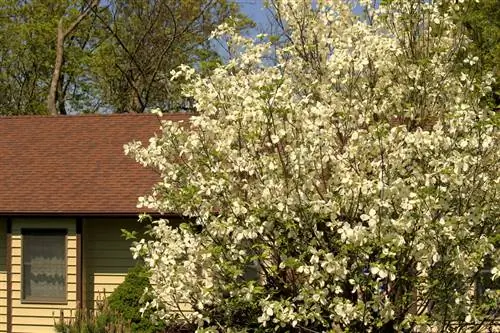- Author admin [email protected].
- Public 2023-12-16 16:46.
- Last modified 2025-01-23 11:21.
The rock pear was “rediscovered” by amateur gardeners just a few years ago. While this plant was previously grown primarily for the use of its edible fruits, today the focus is on the appearance of the flowers and leaves.

How do you optimally care for a serviceberry?
The optimal care of a serviceberry includes regular watering of young plants, avoiding waterlogging, occasional fertilizing with compost or horn shavings, removing diseased parts of the plant in the event of disease and careful pruning after flowering.
How often should a serviceberry be watered?
Immediately after planting, young serviceberries should be watered lightly over a period of a few weeks. Otherwise, a rock pear usually gets by with the natural rainfall in the garden, except in extremely dry phases. The situation is somewhat different with rock pears in pots, which should be watered occasionally in the summer as needed. However, with these, as with specimens in the open field, any type of waterlogging should be avoided with an appropriate substrate.
What should you consider when repotting or planting a serviceberry?
You can't actually go wrong when planting or transplanting a serviceberry. Spring and autumn are suitable times. It will have a positive effect on the subsequent growth of your serviceberry if you consider the following points when planting:
- Planting hole or pot should be generously sized
- a drainage layer prevents waterlogging
- Added compost is sufficient as a long-term fertilizer for at least one year
- After planting, do not press the substrate too hard and thereby compact it
- during planting, a plant cut can restore the balance between roots and plant mass
When and how can a serviceberry be cut?
Basically, for all varieties of rock pear, older specimens should never be shortened too brutally. If you want to achieve a certain shape, such as an obelisk, you need to start early with very subtle cuts. These can ideally be carried out after flowering, but also on a smaller scale in spring, summer or autumn.
Which pests can attack a serviceberry?
Rock pears are generally extremely robust and are rarely attacked by pests.
What can you do to combat serviceberry diseases?
Rock pears, like many other rose plants, are affected by fire blight. Affected plant parts should be cut back to he althy wood as soon as possible. However, infestation by powdery mildew occurs more frequently, and preventative spraying should be carried out with a 1:5 mixture of milk and water from the moment it sprouts. In addition, infected buds and shoots must be removed as the fungus overwinters in them.
How should a serviceberry be optimally fertilized?
Rock pears also grow in nature on very poor soils and do not require intensive fertilization apart from occasional composting or horn shavings used as long-term fertilizer (€52.00 on Amazon).
What should you pay attention to when overwintering rock pears?
Rock pears are hardy outdoors as well as in pots. However, care should be taken to avoid waterlogging or drought damage caused by long periods of frost.
Tip
Fertilizers used on serviceberries should contain as little nitrogen as possible, as this can increase susceptibility to powdery mildew.






